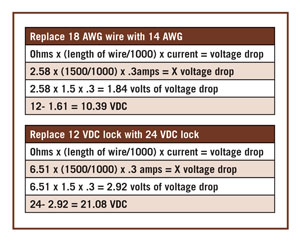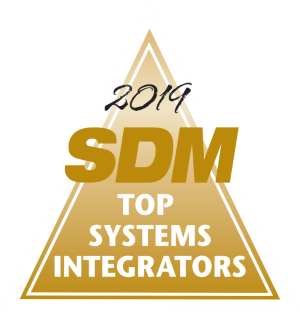1. A device or system intended to electrically lock a required means of egress door in the direction of egress does not necessarily have to be connected to the fire alarm system serving the protected premises.
a. True
b. False
2. Door assemblies in the means of egress shall be permitted to be electrically locked if equipped with approved, listed hardware and only if certain requirements are met.
a. True
b. False
3. Approved, listed, delayed-egress locking systems shall be permitted to be installed on door assemblies serving low and ordinary hazard contents in buildings protected throughout by an approved, supervised automatic fire detection system regardless of which direction the leaves of the doors unlock.
a. True
b. False
4. Door locks shall be arranged to unlock in the direction of egress from a manual release device provided that the manual release device is located on the egress side, _______________ inches above the finished floor, and within __________________ inches/feet of the secured door openings.
a. 36-48, 5
b. 60, 48
c. 40-48, 60
d. 48, 48
5. Activation of the building automatic sprinkler or fire detection system, if provided, shall automatically unlock the door leaves in the direction of egress, and the door leaves shall remain unlocked until the fire-protective signaling system has been manually reset.
a. True
b. False
6. There are specific door handles that are approved for use in areas where handicap accessibility is required.
a. True
b. False
7. A left-hand inswing door is one in which
a. the hinges are on the right when viewed from the outside.
b. the hinges are on the left when viewed from the outside.
c. the location of the hinges doesn’t matter.
d. the hinges are on the left when viewed from the inside.
8. For a lockset installation, the “backset” is the
a. thickness of the door the lock is being installed.
b. the distance from the edge of the door to the center of the bored hole for the lock.
c. inside components of the lock or the parts of the lock on the “back” of the door.
d. None of the above
9. Delayed-egress locks complying with NFPA 101, 2012 Edition, 7.2.1.6.1 shall be permitted on doors other than main entrance/exit doors.
a. True
b. False
10. Electronic locking devices that continue to keep a door locked upon a power failure are considered
a. to be illegal. People must be able to exit the facility.
b. fail safe.
c. a total failure.
d. fail secure.
11. Approved, listed, delayed-egress locking systems shall be permitted to be installed on door assemblies serving low and ordinary hazard contents in buildings protected throughout by an approved, supervised automatic fire detection system provided that the doors release upon activation of
a. not more than one heat detector of an approved, supervised automatic fire detection system.
b. not more than two smoke detectors of an approved, supervised automatic fire detection system.
c. a manual pull station.
d. Both a and b
e. All of the above
What’s Wrong With This?
A technician was installing a 12 volt DC electric strike on a fire-rated door. The strike had a current draw of .3 amps. The manufacturer stated that the lock would function with 85 percent of the rated voltage. The door was 1,500 feet from the power source. The technician installed 18 AWG wire. However, the door release failed to operate. Can you figure out what was wrong and how to rectify the problem? Use the following chart:

|
Answer to: What’s Wrong With This?
The 12 VDC lock only had 9.09 volts at the strike by the time the voltage reached the lock. In order to make the lock operate the installer could either re-run the wire or substitute a 24 VDC lock in its place. If he re-ran the wire the voltage at the lock would be 10.16 VDC with 16 AWG wire (less than 85 percent), and 10.39 VDC with 14AWG wire. The 24 VDC lock on the other hand would have 21.08 volts at the lock, sufficient for it to operate.

|
Here are the answers to 5-Minute Tech Quiz
1. b — NFPA 72, 2010 Edition, Section 21.9.1
2. a — NFPA 101, 2012 Edition, Section 7.2.1.5.6
3. b
4. c
5. a
6. a
7. b
8. b
9. a
10. d
11. d — NFPA 101, 2012 Edition, Section 7.2.1.6.1.1









